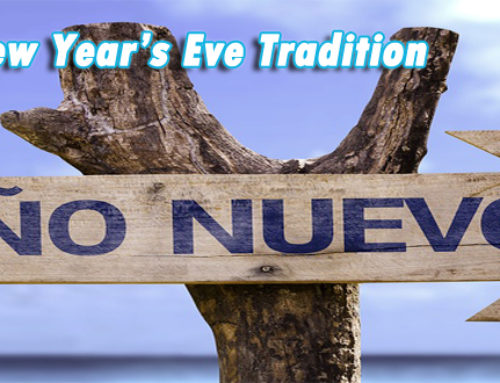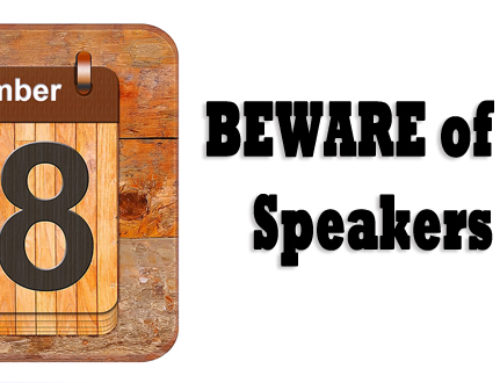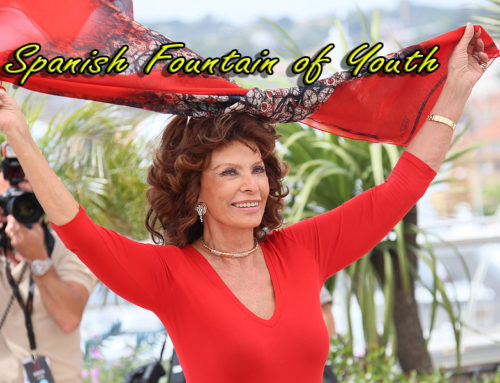
My father in law was looking after my son. When I got home he gave me the report of the day. He said with great pride…
El niño se comió todo.
If I took a textbook definition of el niño se comió, I’d have been worried about my son. You see according to textbook rules, el niño se comió means…
The boy ate himself.
The textbook tells us that se is a reflexive marker meaning himself. That’s fair enough with phrases like these;
se lavo – he washed himself
se afeito – he shaved himself
se corto – he cut himself
They all make sense don’t they?
But the textbook falls apart with…
se comió = he ate himself
Here’s what it really means when you go Beyond The Textbook and understand how native speakers really use their language.
Se comió todo, simply means, he ate UP everything.
In English we can say,
he ate everything
or we can say,
he ate everything UP
UP just gives a bit of extra oomph to the phrase.
And in the Spanish version, SE doesn’t mean up, it just adds emphasis in the same way adding UP does in English.
El niño SE comió todo – the boy ate everything UP
You know after years of living in a Spanish speaking country, I’ve made hundreds of distinctions like these.
These distinctions make it easy for me to understand exactly what native speakers like my father in law are saying.
Knowing these subtleties is essential for understanding advanced Spanish.
Yet, while the textbooks are busy explaining advanced Spanish grammar ,they drop the ball when it comes to this living language.
That’s why I’ve decided to make available a free series of short sharp explanations of everyday living Spanish. They’ll give you a deeper understanding of the way native speakers use their language.
They’ll take you out of the textbook and into the street where the language lives and breathes.
I had to be my own sleuth to figure all this out. You can save years of detective work just by joining my Spanish Beyond the Textbook newsletter.
If you’d like to receive my lessons, articles and audios, click the button below:









Absolutely loving the synergy Spanish lessons slowly but surly getting there I never thought this would be possible your methods are sinking in thank you very much
I just love the free tips you give along with all your teaching methods. I’m learning more Spanish because of your training, Thank you very much!!
thanks a lot marco’s my background is italian) i can speak italian and english and with your great teaching know i’m learning to speak spanish, your cynergy class is number one i know i got a long way to go but with your help i’m getting there thank you.
kind regards your pupil ,francesco alessi
You make functional Spanish so very easy. I would like to say thank you as I continue on my Spanish learning journey.
Thank you so much for the valued information each time i learn from you new things
Gracias muchas Marcus por del informaccion.
This is really great work Marcus. I am doing functional Spanish at school now, its a crash course and i am expected to learn Spanish fast. I used to learn a lot from your emails but got taken up with a lot of course work. Today I plan to spend more time to do better. love what your doing.
Marcus,
Pienso que tu metodo serviria tambien para aprender Ingles, para los que hablamos
español; al ejemplificar el significado de una oracion en español en tu idioma natal
por lo menos a mi me ha quedado mas claro y me da mas confiaza.
Gracias.
Hola Marcus
Your lessons are the most practical ways for learning Spanish, that I have ever seen.
Keep up the good job!
Yes I can understand how confusing this can be.
My problem is that although I have lived on this canarian speaking Island, remembering they have their own words and dictionary I have only ever picked up on tv and what is spoken around me.
I never ever have sat and had a lesson and I feel that the verbs are so difficult. I purchased a book 501spanish verbs only to be informed they do not use that many and putting things into context like spanish boy ate himself (can be frustrating) so after 16 years and speaking spanish nearly every day I still am struggling.
I look forward to learning,,,(I think)
Always providing fresh insights to the Spanish language.
Many thanks
thanks!
Aprendiendo cada dia
These have been great for an above 70 year old!
I like your spanish lessons because they are easy to learn new words and sentenice structure.
Good
You have the best method available for the” eager to learn
spanish” folks like me. Thank you ………………….
I love reading your info
Marcus
I really enjoy your stories and anecdotes – they give a real live kick to learning Spanish
Hi Marcus:
Love your lessons! I have spoken Spanish for some years. My teacher is a friend from Bolivia. She is in California and I in Arizona. We talk by phone, which is hard sometimes, and I feel like I’m losing my Spanish. I watch the Novelas, but it’s not enough just to speak to my cats. I’m really enjoying my time with you!!!
Thank you so much!!
Barbara
I really like your approach to teaching Spanish. I have taken a number of courses in Spanish in
several countries and studied various textbooks. The texts are dry and uninviting. Your approach adds flavor to learning Spanish.
Hi Marcus,
What a great idea you have thought of. It will be a great help. I am really enjoying the course and progressing very well. I even surprise myself!! Your regular emails not only help with the Spanish but they also make me feel like you are now a friend who is there to help. I have tried to learn the language before but gave up because it all seemed too much but with your lessons I really look forward to them and it helps so much having the videos.
Many thanks
Betty
Hello Marcos,
Many thanks for all you do to help your students and here you come up with another interesting idea. I would very much like to learn of these various phrases used in Spanish in the hope of understanding more easily those whom I live amongst. And, maybe in time I might even be able to ´show off´ a new skill.
Thank you again.
Saludo amigo
Hi Marcus
You really do go the extra mile for your subscribers. I have never encountered a course that keeps coming up with extra materials at no additional cost. It keeps the learning fresh and lively!
Thanks a million – you’re a star teacher,
Douglas
Very inspired way of sharing knowledge. Efficient, easy and fun! I have very little spare time and my fear was that I could not commit to a learning program, but your method, Marcus, makes me wanting to spend the week ends learning :). Hope you feel great making so many people feeling better !!!
Marilena
Interesting idea
Please send me your Spanish beyond the textbook newsletter
Thanks, Don
Thanks Marco, this is what I like, teaching us the way to get down to the nitty-gritty of the Spanish language.
I finished Pimsleur Spanish IV a couple months ago. I can usually get the drift of written Spanish but have so much trouble understanding the spoken. You are really helping me. Thank you so much.
You are amazing , just when I think that you have covered all the bases , up you come with something new and exciting ,¡ Bien hecho amigo !
I have really enjoyed your Spanish courses. I would love to continue on, they have really helped me a lot. I’m in a Spanish class but because of your classes I have the confidence that I can continue. Your Spanish has really really help me. Thank you and keep the good work up and also I share the information that you provide to me with others.
have tried to get your free series of short sharp explanations of everyday living Spanish to no avail .
can you please resend as you have my email .
thanks. andy
Hi Marcus,
I totally agree. You’ll remember I’m drowning…I mean, living…in the DR as an older PCV. Today I saw on the street, again, a fellow who has just returned from the US. I asked him how’s his English ((we’re speaking Spanish and his is good. What do I mean, his is good? Isn’t everyone’s Spanish good in a Spanish speaking country? Ahem, I think that question contains the seeds of its own answer. How do I dare suggest otherwise? Well, actually, few Spanish speakers here speak Spanish “well”…and almost nobody reads…or can read Spanish. These are clues to my problem but did Peace Corps clue us in on this stuff? Nope!)
Anyway, this fellow, Wakin, said, no, his English hadn’t improved. He said, disappointed, that he couldn’t understand anyone and he pointed to his ears. I said, “What’s wrong with us? I have the same problem. I can’t understand anything (I was exaggerating–I get common phrases and everyday situations that are pre-broadcast by situation or gesture) either. I think there is a communication between my ears (I grabbed my ears) and my brain (I cradled my skull in my hands)that has been cut.
I am reading children’s stories. I’ll tell you…the books are for 4 to 6 year olds and they are way above my Spanish level. The good news, though, is that I can understand most of what I am now reading. The sweet and engaging stories (the Prince in the Refrigerator, Matlide) do paint pictures in my mind (sometimes the images quaver and fade in and out as I try to figure out just the kind of thing the “el nino se comio todo” example points out, that everyday expressions don’t fit textbook rules.) If I spoke fairly fluent Spanish, I might be able to figure them out just as I can usually figure out what my British relatives are talking about when I see them (my Mom was from England, and I heard similar expressions (she was from a navy family, to boot) as I was growing up…and love their colourfulness.)
I have a couple of friends now who are helping me read my children’s books. I think reading can be one of the skills that could combat the apparent disconnection we older people have between our ears and our brains.
Your examples and approach seem right on the money to me. There is a more organic way of learning a foreign language that is closer to the way children learn a language. We must remember that children are brilliant at learning language but that, still, being read to is critical to their attaining good proper language.
Also,, a warning: Unlike English, French, German and some others, Spanish seems to be not a single language but a multi-language. I’m getting the impression that the language police would like it if there was a formal Spanish, an Alto-Español, like High English or Haupt-Deutsche. But it seems that with some 500 million Spanish speakers there are 500 million versions of Spanish, and that that’s okay. (And, though I can’t exthackly sthput my finger on it, sthereths sthomething sthrange about Casthtilliano.)
So, since I’ve discovered I love to read children’s books in Spanish (best if there is also an English version to go along,) do you have any suggestions for books, perhaps a ladder series of increasing difficulty/sophistication? It’s fun to read. It’s fun to read in Spanish. But it’s not fun to be totally overwhelmed by the Spanish. Poco a poco, I suppose. Same my poko is muy poco, damasiado poco pero lo que es, es.
And, by the way, what’s the difference between, “lo que es, es” and “lo que sea, sea” ? The second uses the subjuntivo. My little verb book (501 verbs, you know it) gives 15, count’em, 15 different situations/instances for the use of the subjuntivo. I’m looking for the unifying sense of the subjuntivo. It seems it applies to almost every situation in which lack of clarity or certainty is present. What sense unifies that critical tense? We must remember that I can’t “hear” most of the Spanish spoken to me. Most Spanish sounds like a train wreck of syllables (there’s no Spanish translation for that American expression by the way) followed by, “me entiendes?” …which actually sounds like, “Maintiendes?” which is a word I don’t know and can’t find in the dictionary and no Spanish speaker who uses it here seems willing to explain to me. It’s as though you have to know what is about to be said in order to understand what is said. I’ve almost determined that older people have a terminal brain disconnect that happens after a person is ___ years old and they can’t learn language anymore…which would be very sad.
Thank you for your lessons. I live in Spain and speak spanish, I suppose you would call it Intermediate level, however, I have learnt only through speaking with people and had no formal lessons – Ever! Therefore, grammar is totally lost on me because I only know the ‘street’ Spanish.
Even though I have a reasonable vocabulary and accent, some of your lessons made me think “oh, that’s what that means” or “so that’s how you say that” Again, thank you.
Marcus,
Gracias, me como todos tus lecciones.
Benjamin
I am interested in checking this out for a trial period.
Kindest regards Alan James
Unforunately se is a very complex pronoun and most textbooks only the most basic uses such as reciporal and reflexive while leaving this one and the use of se to change verb meaning (Pronomial since they are not truly reflexive in that subject is also the object) . For those of you who already understand Spanish Blog de español also did a good series on all the uses of se including this one
http://www.blogdeespanol.com/2013/07/repaso-general-del-pronombre-se/
Your approach is in fact endorsed by research. Trying to learn a new language through grammar has been proven to be ineffective. Yes the se has always kind of mystified me. There are many short words in English that must be equally mystifying for Spanish speaking people- words like just.
Linda K has made this point about learning through grammar from her own experiences. As a teacher of Indigenous desert kids in Australia, I have researched second language acquisition. All the research I have read has emphasised you cannot learn a target language through grammar points; so Marcus you are right on the dinero mate.
Gobble also has that same intensity too. Comerse can also mean to drop or swallow a sound.
Verbs are the nightmare in learning Spanish. This helps. Thanks mucho.
Dear Mr.Santamaria,
Many Thx for your detail explaination of Reflexive verb.I could understand the meaning of this
native expression of “eating up all”.I have learned similar expression in German and Indian
languages.It is always a pleasure to read your comments about Spanish language.
Thank you very much.Muchas Gracias.
I love your emails. I have always loved Spanish and actually majored in it for a while in college. I always heard the same thing from all teachers. You won’t learn it very well as an adult. I tried very head and made straight A’s in grammar but was never fluent. I have used other courses and tapes and still only speak as a small child would.
Your course makes so much sense for really learning the languages. I wish I had found you years ago. I actually would like to teach a course like this myself using your tools. I’m just thinking about it, of course. Can you tell me if that’s feasible and if you would allow it.
Thanks so much for allowing us older adults know we can also become fluent.
I’m always happy to share my materials with teachers. When you are ready just drop me a email and I’ll make it easy for you to get started.
Muchas gracias Marcus. ¡Qué interesante! Sus lecciones son fantásticos.
Muchas gracais Marcus. ¡Qué interesante! Sus lecciones son fantásticos.
Hi Marcus, Although not keeping up to date with all your lessons, I am finding it a lot easier to understand when you give us these extra pointers to the Spanish language.
enjoying your courses! I’ve lived in mexico for 6 yrs and taken several courses, none have helped as much as your courses have. thank you.
Thanks for that Marcus, it’s going to be really useful as we go to Spain (Costa del Sol) for the winter months!
Hi Marcus
I love the way you are teaching Spanish. As a 19 year old I lived in Spain with a Spanish family for a few months and picked up conversational Spanish quite well. As you say there are many odd things that don’t fit with normal Spanish lessons. I remember ‘no corre nada’ meaning somethig like, ‘he can really run!’. Keep up the great work. Maria
Another excellent free tip thank you Marcus. I always enjoy reading your emails they are great and very helpful.
Regards George Monks
I can honestly say that I get more out your teaching than I got out of an eight hundred dollar course.